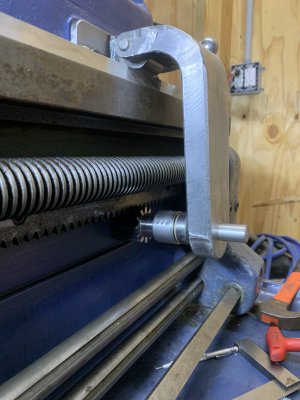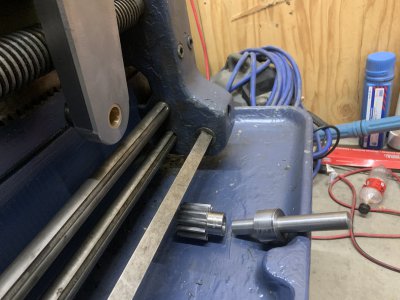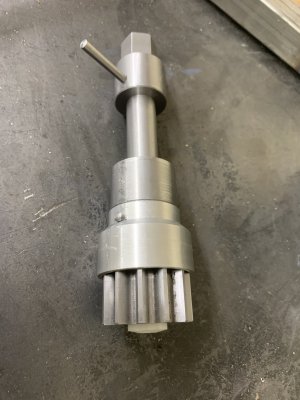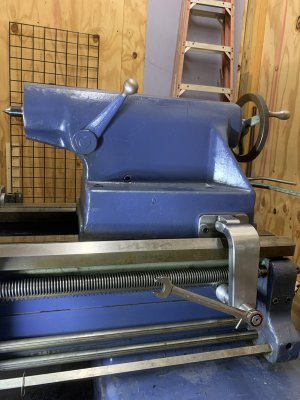And the next chapter - working on the cross slide.
I decided to take the cross slide apart. It was just a little stiff to turn, not bad, but the size of this thing means anything less than perfect makes it difficult to turn leadscrew accurately.
I used the hoist to take the compound off. I'd bet the compound weighs at least 100lbs. Note one problem, the oil line is disconnected. This was under a sheet metal chip shield so I had not noticed this earlier. Fixing that would be straightforward, but it appears that the oil for this was sourced from the reservoir in the back of the carriage. I'd taken the cover off the reservoir in my attempts to figure out how to remove the cross slide.
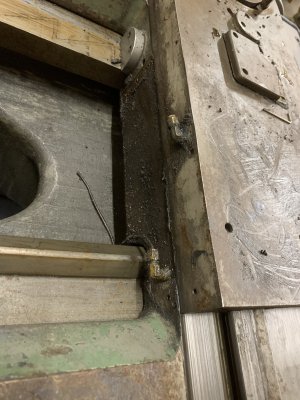
That reservoir is associated with the remnants of an electronic tracer mechanism, basically a missing (servo?) motor which could drive the back end of the leadscrew. The wires here are part of an electromagnetic clutch for that motor. That motor also turned an oil pump even when the clutch was disengaged, but the motor is currently missing. So no oil pump action to the cross slide. I will need to explore exactly what was oiled from that pump and how it was routed. I may just install a manual one-shot oiler.
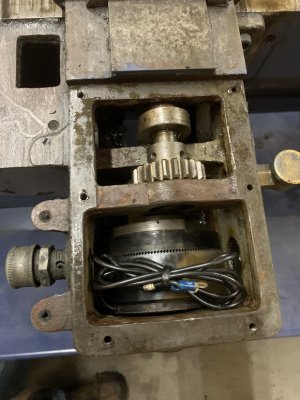
Took me a little bit to figure out the way to remove this cross slide was to pull the gib out. I was expecting it to slide off of one end or the other.
Here is the bottom of the cross slide, resting on its side, and the cross slide ways, leadscrew and leadscrew nut below. The 123 block is for scale.
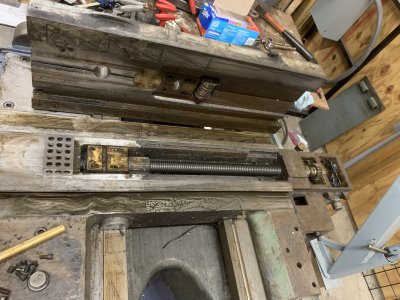
Looking closer at the leadscrew nut, you can see it has four tapped holes and a slot across the top. The four holes match to the bolt holes in the cross slide with the hole in the casting. That hole normally has a plug with a V'd bottom that sits in the slot in the nut. Not sure exactly what that accomplishes. But more interesting is the brass/bronze pinion to the right of the nut. The pinion is threaded onto the leadscrew, but is independent of the main leadscrew nut. The worm drive in the bottom of the cross slide engages that pinion and turns it into/away from the main nut. The worm drive is turned by a deceptively small allen head on the end of it's shaft on the side of the cross slide. This mechanism allows the backlash in the nut to be adjusted. From what I can tell this mechanism was an option included on the 612 model if it had either a tracer attachment or the electronic tracer.
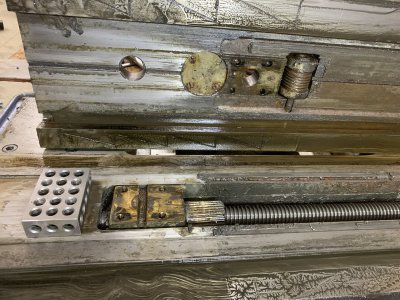
Stopped for lunch there. Next step will be to remove the leadscrew itself, and start cleaning everything. Then check the bearings. If you look back at the first of these pictures, you'll see the square plate on the top of the cross slide is cracked. That plate is what holds that worm gear. So I'll need to dissassemble that and either braze up the casting or fabricate a new piece.


